The Swiss Alps Jungfrau-Aletsch region is situated in the cantons of Valais and Bern. The Swiss Alps Jungfrau-Aletsch is an outstanding example of the High Alps formation in Switzerland. The Jungfrau-Aletsch region is the most glaciated part of the Alps. The area holds nine impressive peaks over 4000 metres, among them the 4158 metres high Jungfrau. The Jungfraujoch is the lowest point between the mountains Mönch and Jungfrau. The Great Aletsch Glacier is the largest glacier in Eurasia. The Aletsch Glacier is 23 km long and has a maximum thickness of about 900 metres. The Ice Palace inside the Aletsch Glacier include vaulted rooms, furniture, a bar, people, birds and animals, all made of ice. Due to global warming, the Aletsch Glacier has retreated about 3.5 km in length since 1850, and lost about 300 metres of its thickness. The impressive landscape of the Swiss High Alps has played an very important role in alpine tourism, European art and mountaineering. The Swiss Alps Jungfrau-Aletsch is a natural UNESCO World Heritage, just as the Piz Sardona in the Glarus Alps. The Swiss Alps Jungfrau-Aletsch is located about 80 km from Bern. The Jungfrau-Aletsch region of the Swiss High Alps gained the status as a UNESCO World Heritage in 2001, it was first inscribed on the UNESCO World Heritage List as Jungfrau-Aletsch-Bietschhorn. The World Heritage Swiss Alps Jungfrau-Aletsch was extented in 2007, the extension includes glacial valleys, such as the Fiescher Glacier and Aare Glacier. World Heritage Art: Summer Flowers around the Jungfrau-Aletsch
www.werelderfgoedfotos.nl © Copyright World Heritage Photos
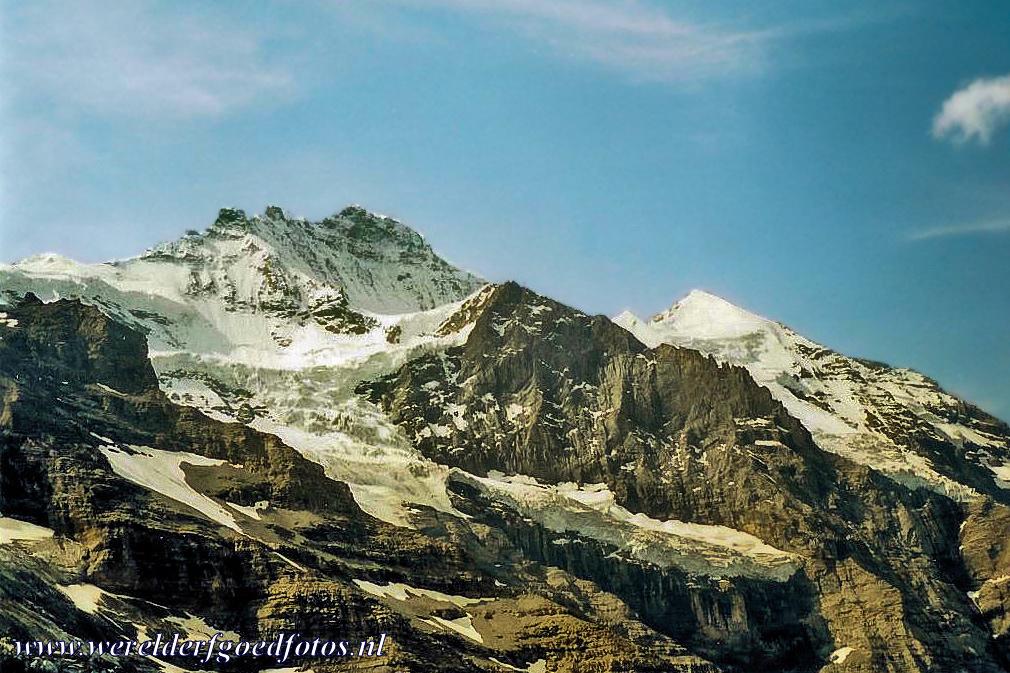
The Swiss Alps Jungfrau-Aletsch is an outstanding example of the formation of the High Alps. The Jungfrau-Aletsch is situated in the most glaciated part of the Alps. The largest glacier of Eurasia is situated in the Swiss Alps Jungfrau-Aletsch. Alps. The Swiss Alps Jungfrau-Aletsch gained the status as UNESCO World Heritage in 2001. After the extensionof the World Heritage in 2007, it includes other large glacier valleys such as the Aar Glaciers and the Fiescher Glacier.

The Swiss Alps Jungfrau-Aletsch is an outstanding example of the formation of the High Alps. The Jungfrau-Aletsch is situated in the most glaciated part of the Alps. The largest glacier of Eurasia is situated in the Swiss Alps Jungfrau-Aletsch. Alps. The Swiss Alps Jungfrau-Aletsch gained the status as UNESCO World Heritage in 2001. After the extensionof the World Heritage in 2007, it includes other large glacier valleys such as the Aar Glaciers and the Fiescher Glacier.
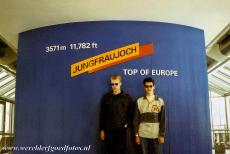
Swiss Alps Jungfrau-Aletsch: It is possible to travel to the Jungfraujoch. A trip by cogwheel takes you to the Jungfraujoch and the Jungfrau-Aletsch region. The Wengernalp Railway takes you from Grindelwald up to the Kleine Scheidegg mountain pass at the foot of the Eiger North Face. From the Kleine Scheidegg, the Jungfrau Railway takes you up to the Jungfraujoch, the Top of Europe. From the Jungfraujoch you have a magnificent view over the Aletsch Glacier.
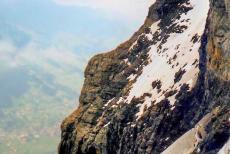
The Jungfrau Railway takes you up to the Eiger North Face and the Jungfrau-Aletsch region. The Eiger North Face (about 1800 metres), one of the three great north faces in the Swiss Alps, is towering vertically above Grindelwald. It was only in 1938 that the first alpinists discovered a route via the Eiger North Face to the summit of the Eiger, the Germans Andreas Heckmair and Ludwig Vörg, the Austrians Fritz Kasparek and Heinrich Harrer, author of 'Seven Years in Tibet'.
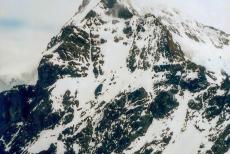
Swiss Alps Jungfrau-Aletsch: The summit of the Jungfrau (maiden). The Jungfrau is the third-highest mountain of the Bernese Alps. The Jungfrau-Aletsch region holds nine peaks, among them the Eiger, the Mönch, the Bietschhorn and Jungfrau. The Jungfrau-Aletsch region stands for the splendid beauty of the Alps. The 4158 metres high Jungfrau was first climbed in August 1811. The Jungfrau the highest mountain overlooking the Jungfraujoch.
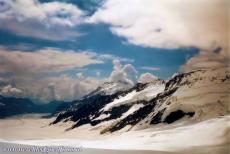
The Great Aletsch Glacier is the largest glacier in Eurasia, the huge glacier is part of the natural UNESCO World Heritage Swiss Alps Jungfrau-Aletsch. The surface area of the Aletsch Glacier is approximately 80 km². The area is the most glaciated part of the Alps, the area holds nine peaks over 4000 metres, among them the Jungfrau. The Swiss Alps Jungfrau-Aletsch area has played an very important role in alpine tourism and mountaineering in Europe.
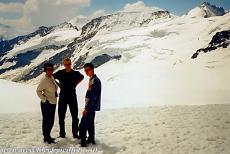
Swiss Alps Jungfrau-Aletsch region: A walk on the eternal snows of the Jungfraujoch, in the background the giant ice flow of the Aletsch Glacier. The Jungfraujoch is the lowest point between the mountains Mönch and Jungfrau. The Aletsch Glacier is the largest and longest glacier of the Alps. The Aletsch Glacier is about 23 km long and has a maximum thickness of about 900 metres. The Swiss Alps Jungfrau-Aletsch region covers almost all of the Bernese Alps.
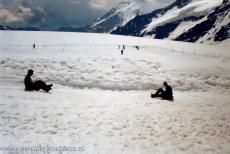
Swiss Alps Jungfrau-Aletsch region: A snow disc ride on the eternal snows of the Jungfraujoch and Aletsch Glacier. The Jungfrau-Aletsch region is situated in the Bernese Alps, a part of the Swiss Alps. The Jungfrau Railway takes you from the Kleine Scheidegg up to the Jungfraujoch. Though it is an expensive day trip, it is one of the best ways to visit the most impressive part of the UNESCO World Heritage: Jungfraujoch and Aletsch Glacier.
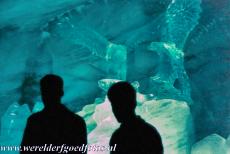
Swiss Alps Jungfrau-Aletsch: Several ice sculptures inside the Aletsch Glacier Ice Palace. The Ice Palace is situated inside the Aletsch Glacier. The 1000 m² Ice Palace was carved out of the glacier in the 1930s, the network of tunnels was made by hand. The Ice Palace include several vaulted rooms, sculpted birds, animals, statues, furniture and even a bar, all made of ice. The imposing landscape of the Swiss High Alps has played an important role in European art and literature.
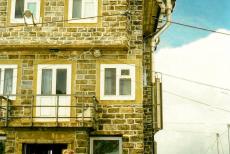
Swiss Alps Jungfrau-Aletsch region: The Jungfraujoch Sphinx observation terrace at 3471 metres. The Swiss Alps Jungfrau-Aletsch is a natural UNESCO World Heritage, the site was first inscribed as the Jungfrau-Aletsch-Bietschhorn. The UNESCO World Heritage Swiss Alps Jungfrau-Aletsch was extented in 2007, the extension includes several glacial valleys, such as the Fiesche Glacier and the Aare Glacier.
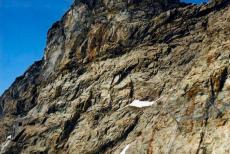
The Swiss Alps Jungfrau-Aletsch is famous for its outstanding beauty. The Swiss Alps Jungfrau-Aletsch is a natural UNESCO World Heritage, the site also includes the Aletsch Forest, home to the primeval larches and the oldest Swiss stone pines (Pinus cembra). The Swiss Alps Jungfrau-Aletsch provides also an excellent source of knowledge about the formation of mountains and glaciers, as well as continuing climate change, primarily caused by human activity.
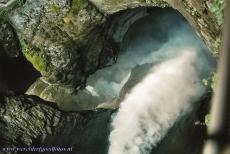
Swiss Alps Jungfrau-Aletsch: The Corkscrew Chute is one of the falls of the Trummelbach, the stream carries the meltwater of the glaciers of the Eiger, Monch and Jungfrau, on hot summer days up to 20,000 liters of water per second. The Trummelbach Falls are a series of ten glacier waterfalls inside the mountain, they are part of the 72 waterfalls of the Lauterbrunnen Valley. The Trummelbach Falls are the largest underground waterfalls in Europe.
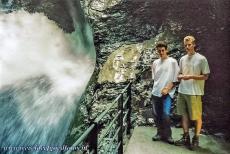
Swiss Alps Jungfrau-Aletsch: The Trummelbach with its ten waterfalls inside the mountain is unique in Europe. The Trummelbach Falls are fed by the meltwater of the ice and snow from the glaciers of the Eiger, the Monch and Jungfrau. The Trummelbach Falls are made accessible by a series of walkways, bridges, staircases and even a lift. The Trummelbach Falls are situated in the Lauterbrunnental, a spectacular valley created by glacial erosion.
